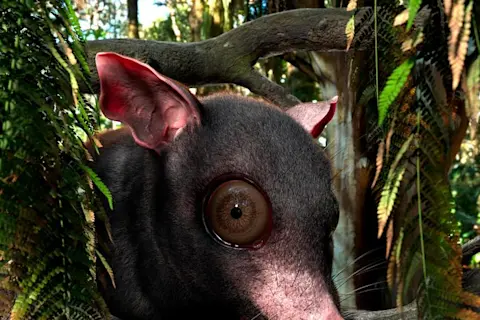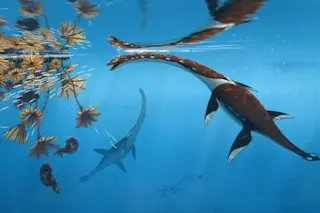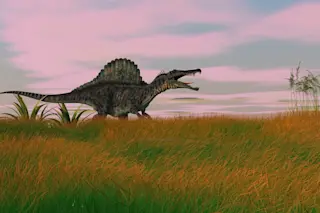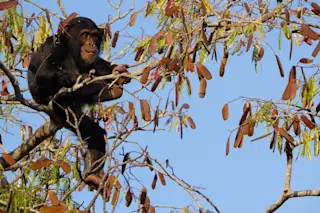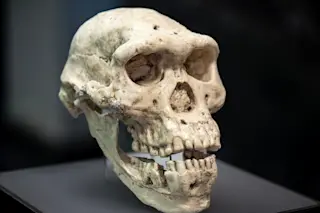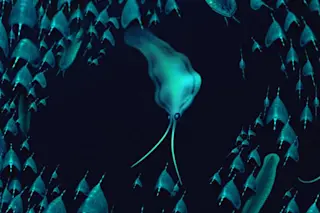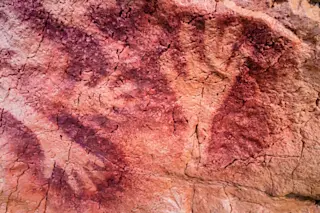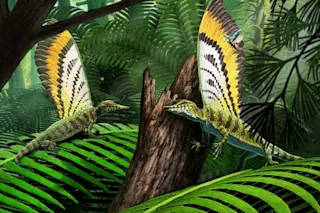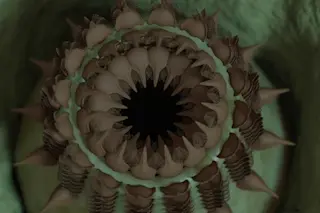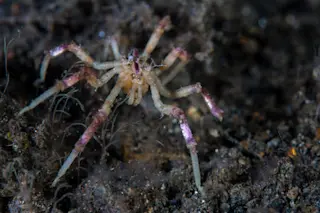Everything’s bigger in Texas – including a new species of 60-million-year-old possum.
A team of paleontologists from the University of Kansas have discovered a new ancient marsupial in Texas’s Big Bend National Park. The possum, named Swaindelphys solastella, lived during the Paleocene and is now the largest known marsupial in North America from that time period. According to research published in the Journal of Vertebrate Paleontology, the possum was only the size of a modern-day hedgehog but was gigantic in comparison to other possum species at the time.
“Our work is aimed at uncovering some of the smaller and harder-to-find fossil mammals that lived in Big Bend at that time. The new fossil we’re describing is notable because it’s the largest marsupial – in terms of body size – found so far in the North American Paleocene,” said Chris Beard, senior curator with KU’s Biodiversity Institute and Foundation Distinguished Professor, in a press release.
Identifying a Big, Ancient Possum
The team was working on fossils found in Big Bend National Park for over a year, trying to identify what species of marsupial the fossils belonged to. There were two prevailing theories: the fossils were either survivors of the Cretaceous-Paleogene extinction event who made it to the Paleocene or the earliest ancestors of Eocene marsupial species that roamed Earth millions of years after the Paleocene.
Through a comparative analysis with other Paleocene marsupials, researchers discovered that both of their theories were incorrect. Instead, the fossils belonged to an unexpectedly large species of Swaindelphys.
Read More: Mammals Weighing Just A Pound Evolved After Dinosaur Extinction
A Connection Between Possums and Primates
This study of Texas marsupials, supported by The Leakey Foundation, can also provide valuable insights into the lifestyles and evolution of early primates. Species like Swaindelphys are incredibly similar to early North American primates. Learning more about the behavior and geographic locations of species like the giant possum allows paleontologists to also learn more about the history of primates.
Researchers are especially interested in the distribution patterns of Swaindelphys. Distribution patterns are the ways in which groups of animals are organized across different geographic locations. By identifying the distribution patterns of marsupials, we can gain a deeper understanding of the geographical and environmental barriers that may have influenced their movement, as well as the movement of early primates.
What Kept Giant Possums in Texas?
The climate of Texas during the Paleocene was quite different, with the weather feeling more tropical than it does today. This tropical climate was home to an abundance of rivers and streams. Swaindelphys solastella was found in what would’ve been one of these rivers — a location that can provide insight into some of the geographic and environmental factors affecting the big possum.
The research team believes that these rivers and streams likely hindered the ability of species like Swaindelphys and early primates to more widely distribute to places like the Bighorn Basin in Wyoming. As rivers and river drainage shifted south, they created a boundary that marsupials and primates could not cross.
“That’s our working hypothesis, and it’s something I’ll be looking into later in my dissertation,” said lead author Kristen Miller in the press release. “We want to see if we can nail down, quantitatively, whether there’s a significant difference on either side of that potential barrier.”
Read More: The World’s Smallest Marsupial Is A Bloodthirsty Carnivore
Article Sources
Our writers at Discovermagazine.com use peer-reviewed studies and high-quality sources for our articles, and our editors review for scientific accuracy and editorial standards. Review the sources used below for this article:
